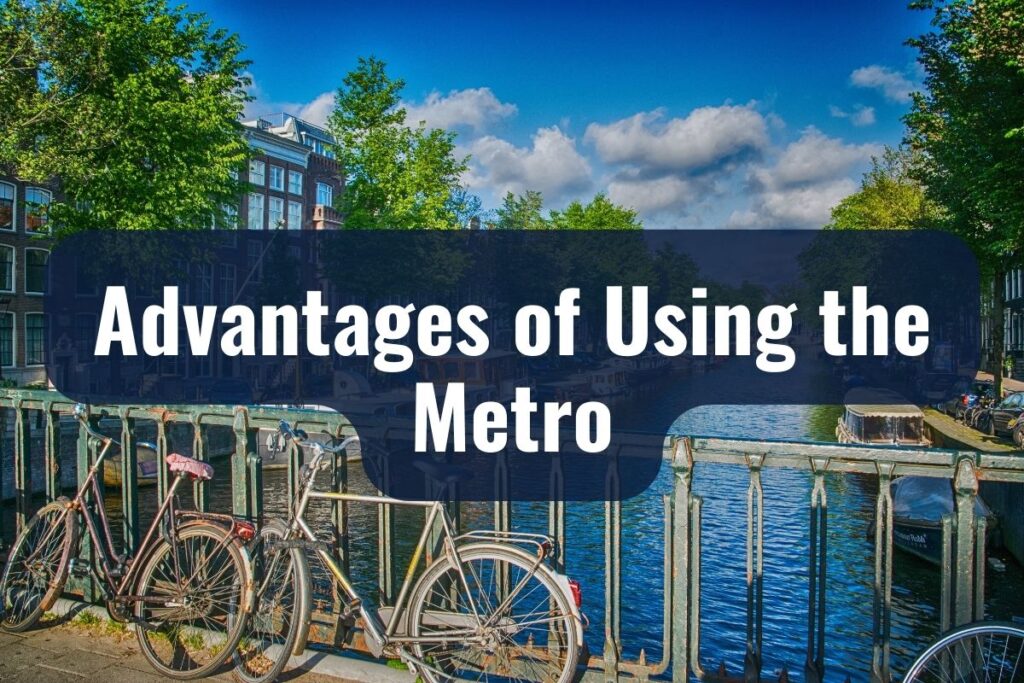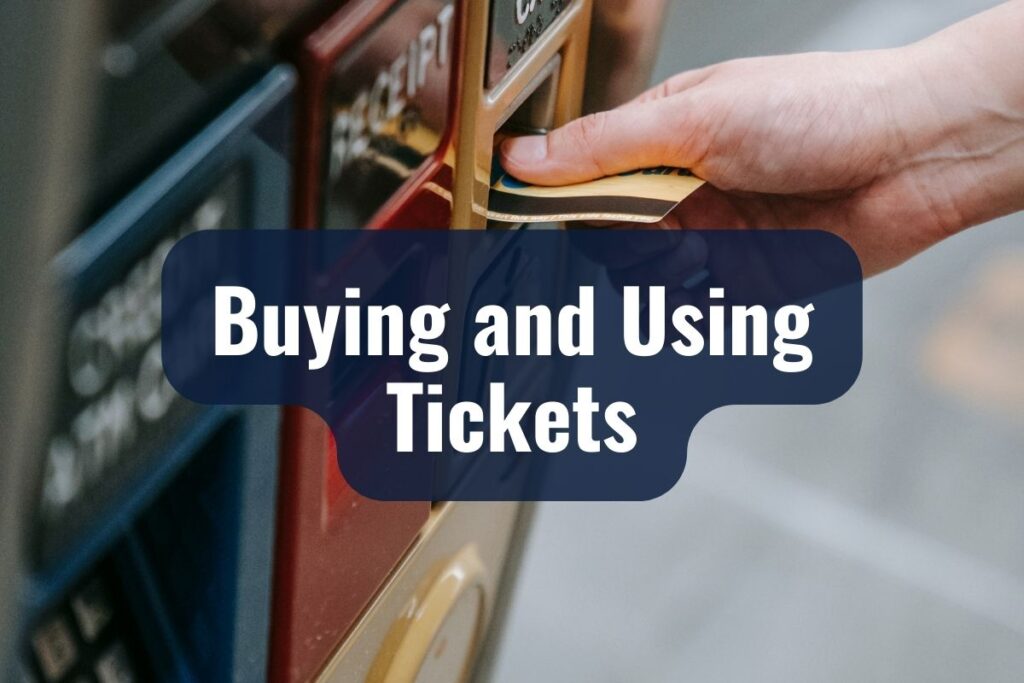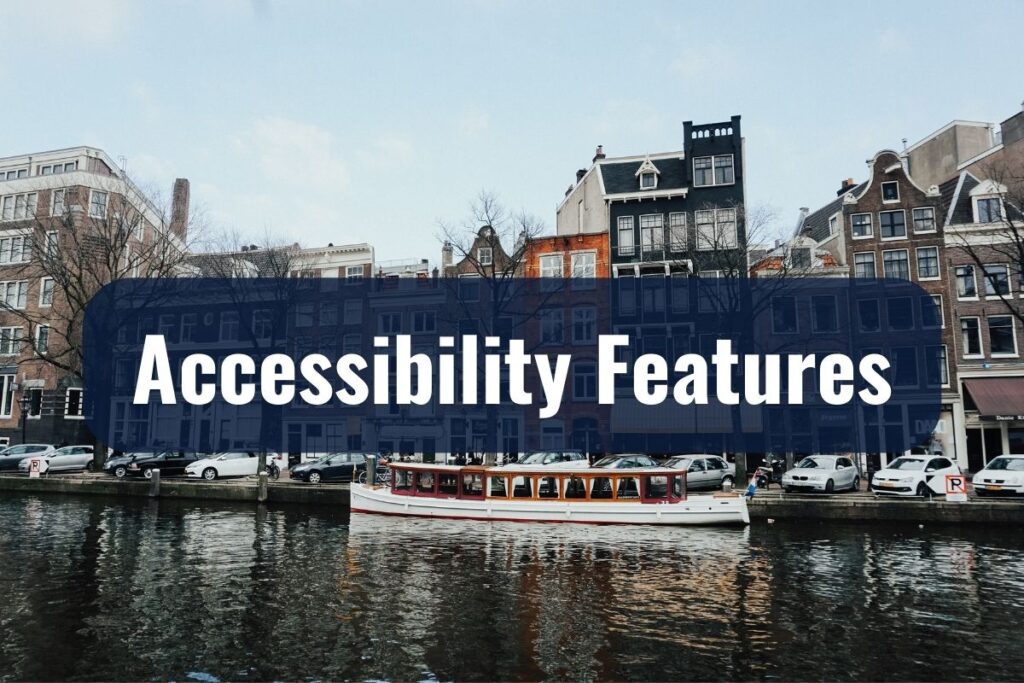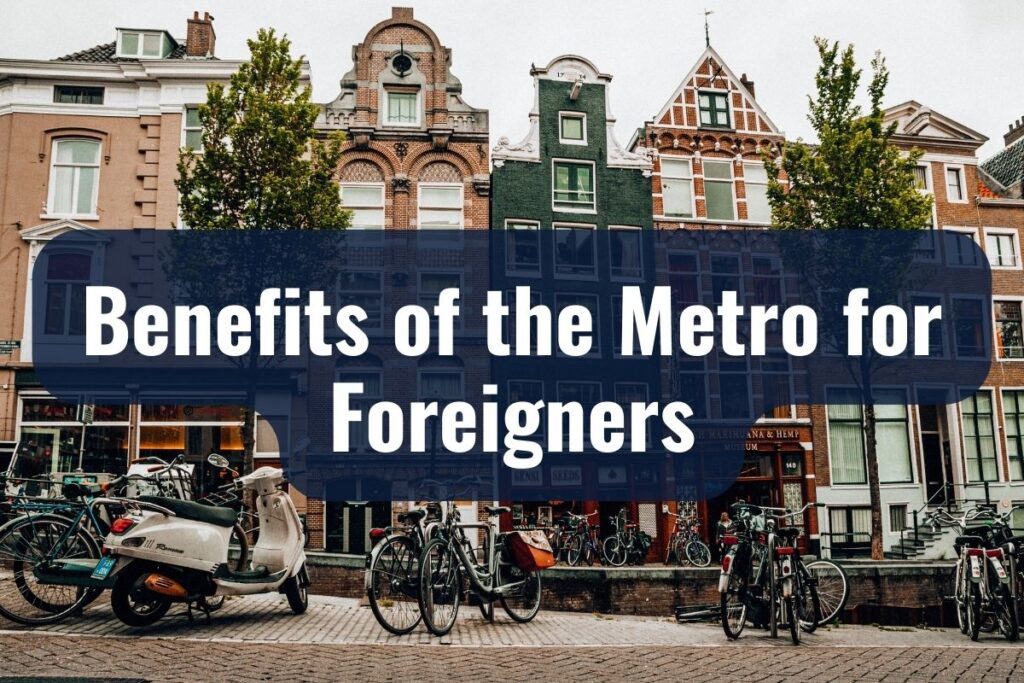For foreigners new to Dutch shores, this extensive network can initially seem a bit daunting. The intertwining routes, diverse ticketing options, and unfamiliar station names could be overwhelming. But fear not! Once you grasp its workings, you’ll find the Dutch metro system to be your trusty companion in navigating urban landscapes.
Whether you’re in bustling Amsterdam, dynamic Rotterdam, or any other city, the metro offers a swift passage through the heart of Dutch urban life. This guide aims to simplify the metro experience for you, making it accessible, understandable, and, most importantly, beneficial during your stay in the Netherlands.
Key Takeaways
- The Dutch metro system is efficient, punctual, and designed for easy navigation.
- Comprehensive accessibility features ensure the metro is inclusive for all passengers.
- Safety is paramount, with vigilant precautions, emergency protocols, and surveillance in place.
- Etiquette in the metro focuses on respect, cleanliness, and shared responsibility.
- Foreigners benefit from the metro’s multilingual support, connectivity, and cultural immersion.
Metro Systems in Major Cities
The Dutch metro system isn’t sprawling in terms of global standards, but what it might lack in extensiveness, it more than makes up for in efficiency and user-friendliness. Two of the country’s most notable metro systems are found in Amsterdam and Rotterdam. Each has its unique features, routes, and experiences to offer.
Amsterdam Metro
The capital city of The Netherlands, Amsterdam, offers a metro system that efficiently complements its array of trams and buses. The Amsterdam Metro consists of several lines, ensuring that most parts of the city and its suburbs are conveniently connected. Some of the key features of this metro system are:
Number of Lines: There are five main metro lines (M50, M51, M52, M53, and M54) which span from the north to the south, and from central areas to the outskirts.
Key Stations: While Amsterdam Central is the heart of all transportation in the city, other significant metro stations include Zuid, Bijlmer ArenA, and Noord.
Special Mention: The relatively new North-South line (M52) has eased the connectivity between the northern parts of the city and the central and southern regions, making it a favorite for many commuters.
Rotterdam Metro
As the second-largest city in The Netherlands, Rotterdam boasts a metro system that is both functional and extensive. Known for its modern architecture and vibrant port, Rotterdam’s metro ensures locals and visitors can easily traverse the city.
Unique Features: Unlike Amsterdam, Rotterdam’s metro extends beyond the city limits, connecting nearby towns such as Schiedam, Spijkenisse, and even The Hague through its E-line.
Main Routes: The system comprises several lines, with the most notable being Lines D and E. These lines intersect at key stations like Beurs, allowing for easy transitions.
Coverage: Rotterdam’s metro covers a considerable area, linking the city center with peripheral regions, and making it invaluable for those living in the suburbs.
While Amsterdam and Rotterdam are the primary players when it comes to metro systems, it’s worth noting that other cities in The Netherlands have strong public transportation networks comprising trams, buses, and regional trains. These might not be metro systems in the strictest sense but serve a similar purpose in connecting urban and suburban areas.
Advantages of Using the Metro

When exploring or residing in a foreign country, understanding the transportation system can significantly shape your experience. The Dutch metro, with its characteristic punctuality and convenience, offers numerous advantages that make it a preferred choice for many, especially in the bustling urban centers. Let’s delve into the primary benefits of harnessing this mode of transport:
Speed and Efficiency
The metro is designed to minimize travel time. With dedicated tracks, limited stops compared to buses, and a general absence of traffic delays, it often stands out as the fastest mode of urban transportation. Especially during rush hours, when the roads can get congested, the metro ensures that you maintain a predictable travel schedule.
Cost-Effectiveness
In comparison to owning and maintaining a car in the city or frequently using taxis, the metro can be much more wallet-friendly. With a range of ticket options catering to varied travel needs, from single journeys to monthly passes, there’s an economical choice for everyone.
Coverage
The metro systems, especially in major cities like Amsterdam and Rotterdam, are meticulously designed to connect key regions. Whether you wish to visit popular tourist spots, head to work, or explore off-the-beaten-path locales, the metro has you covered.
Environmentally Friendly
With the growing emphasis on sustainability, using the metro can be a more eco-friendly option. By reducing the reliance on individual cars and thus cutting down on emissions, choosing the metro is a step towards a greener commute.
Consistency
One of the standout features of Dutch public transport, and the metro in particular, is its punctuality. Trains are consistent with their timing, allowing passengers to plan their journeys with a high degree of certainty.
Ease of Use for Foreigners
Metro systems are typically designed with clarity in mind. Clear signage in Dutch and often in English, intuitive route maps, and regular announcements make it easier for non-Dutch speakers to navigate.
Integration with Other Modes
Many metro stations are integrated with other forms of public transport, such as trams, buses, or even regional trains. This seamless integration ensures that passengers can conveniently switch modes to best suit their destination.
Understanding the Metro Map
The metro map—a colorful tapestry of intertwining lines, stations, and routes—is your key to unlocking the wonders of Dutch cities. At first glance, it might seem like a complex puzzle, especially if you’re not familiar with the city’s geography or the Dutch language. But with a bit of insight and guidance, it can quickly become a comprehensible and invaluable tool in your daily journeys.
Deciphering the Color-Coded Lines
Each metro line is designated a unique color and often a number or letter for easier identification.
For example, in the Amsterdam Metro, you might notice the M50 line represented in a specific color throughout its route. Follow these colors to trace the path of your desired metro line and see where it intersects with others.
Station Names and Icons
Each station is marked with its name. Major stations or junctions might have additional icons, indicating their significance or the availability of other modes of transport, like trams or buses.
For instance, a prominent station like Amsterdam Central might have additional icons denoting its status as a central hub.
Interchange Stations
Some stations serve as nexus points where multiple lines converge, allowing passengers to switch between them. On the map, these stations might be highlighted or depicted with multiple colors, indicating all the lines that pass through.
Directional Indicators
Understanding the direction in which the metro is headed is crucial. Most maps will have clear end-point labels showing the final station each line is headed towards. This can help you ensure you’re on the right platform and train.
Using Digital Resources
Many transportation agencies in The Netherlands offer smartphone apps or websites with interactive metro maps. These digital tools can provide real-time updates, help plan your route, or offer translations.
Apps like NS Reisplanner or 9292 can be particularly useful, offering detailed public transportation guidance, including metro routes.
Language Assistance
While Dutch is the primary language, many metro systems in popular cities have translations or dual-language signs, especially in English. If in doubt, don’t hesitate to ask a local or a metro staff member; the Dutch are generally known for their proficiency in English and their willingness to assist.
Buying and Using Tickets

Navigating the intricacies of a foreign transportation system can often involve more than just understanding routes. A significant component is mastering the ticketing process.
The Dutch metro system, in its bid to be both modern and user-friendly, offers multiple ticketing options suitable for varied travel needs. Here’s a simplified guide to buying and using tickets for the metro in The Netherlands:
Types of Tickets
Single Journey Tickets: Ideal for occasional users or tourists who might only need a ride to a specific destination. This ticket allows a one-way trip between your starting point and destination.
Day or Multi-Day Passes: Perfect for those planning extensive travel within a short period. These passes offer unlimited travel on the metro (and often other public transportation modes) for the entire duration of validity.
Monthly or Annual Subscriptions: Suited for frequent travelers or residents. They offer unlimited rides for the duration of the subscription, providing substantial savings over time.
Purchasing Tickets
Ticket Machines: Available at every metro station. These machines, which often have multilingual options including English, allow you to select, pay for, and print your ticket.
Service Desks: Larger stations might have manned counters where you can purchase tickets and seek any travel-related assistance.
Online and Mobile Apps: Digital platforms, such as the official websites of transportation agencies or specialized apps like NS Reisplanner, offer the convenience of purchasing tickets or recharging travel cards on the go.
The OV-chipkaart
An essential mention in the Dutch public transportation context is the OV-chipkaart. This is a reusable smart card that can be used for all modes of public transport across The Netherlands—metro, bus, tram, and even trains.
There are two main versions: Personal (which has your photo) and Anonymous. The personal version can be linked to a bank account for auto-reloading, while the anonymous one is ideal for short-term visitors.
You can charge the card with credit and then use it by checking in and out at the start and end of your journey, respectively.
Checking In and Out
When entering a metro station or boarding a metro, you’ll notice card readers (usually pillars or gates). Tap your single-journey ticket or OV-chipkaart to check-in.
Similarly, once you reach your destination, ensure you tap out at the designated reader. This process calculates the journey’s cost (in the case of the OV-chipkaart) or closes the ticket (for single-journey tickets).
Forgetting to check out can result in extra charges, especially when using the OV-chipkaart.
Validity and Transfers
Depending on the type of ticket or card you have, you might be entitled to transfer between different modes of transport (like from a metro to a tram) without additional charges. Always ensure you check the terms and conditions of your ticket.
Essential Etiquette and Tips
While the technicalities of using the metro system are vital, equally important is understanding the unwritten code of conduct that ensures a harmonious journey for all passengers. The Dutch value orderliness, consideration, and mutual respect. By keeping in mind some essential etiquette and handy tips, you can ensure your metro experience is both smooth and courteous.
Boarding and Alighting
Wait for Passengers to Exit: Before boarding, always allow those inside the train to exit first. This prevents congestion at the doors and ensures a fluid movement of people.
Stay Clear of the Doors: If you’re not getting off at the next stop, move further inside the train to avoid blocking the way for others.
Seating Etiquette
Offer Seats: If the metro is crowded, consider offering your seat to elderly passengers, pregnant women, or those with small children.
Avoid Hogging: Refrain from placing bags or belongings on an empty seat next to you, especially during peak hours when seats are in demand.
Noise Levels
Keep Conversations Low: The Dutch appreciate a quiet and calm metro atmosphere. If you’re conversing with someone, maintain a low volume.
Use Headphones: If you’re listening to music, watching a video, or on a call, always use headphones and ensure the volume isn’t loud enough to disturb others.
Cleanliness
Dispose of Trash Properly: Always use the trash bins provided at stations. If you can’t find one immediately, hold onto your trash until you can dispose of it appropriately.
Avoid Eating: While it’s not strictly prohibited, eating on the metro, especially foods with strong odors, might be frowned upon. It’s best to eat before boarding or wait until you’ve reached your destination.
Be Aware of Designated Areas
Some metro trains have areas reserved for specific purposes, like silent zones or compartments for bicycles. Always respect these designations.
Keep an Eye on Your Belongings
Like in any major city, always be mindful of your belongings. Keep bags zipped and be wary of pickpockets, especially during rush hours or in crowded metros.
Familiarize Yourself with Emergency Protocols
Every metro train and station will have emergency information and equipment. While the chances of needing them are rare, it’s always good to know where they are and how to use them.
Respect Metro Staff
Whether it’s the driver, a ticket checker, or any other metro staff member, always treat them with respect and follow any instructions they give.
Plan Ahead
Especially if you’re new to the system or are heading to an unfamiliar destination, check the metro map and schedules in advance. This can help you avoid last-minute rushes or confusion.
Accessibility Features

The Netherlands, being a country renowned for its commitment to inclusivity and innovation, has taken significant strides to ensure its metro systems are accessible to everyone, including those with mobility challenges, visual or hearing impairments, and other disabilities.
The metro systems of major cities are equipped with various features to cater to diverse needs. If you or someone you know requires these accommodations, it’s heartening to note the array of accessibility features the Dutch metro offers.
Ramps and Lifts
Most metro stations, especially the newer ones or those recently renovated, are equipped with ramps and lifts to aid passengers with mobility challenges, ensuring they can access platforms without the need to navigate stairs.
Tactile Paving
For visually impaired passengers, tactile paving—a series of raised studs or lines on the floor—guides their path, helping them identify platform edges, boarding areas, or pathway diversions.
Audible Announcements
Trains and many stations provide clear, audible announcements detailing upcoming stops, transfer points, or potential delays. This is not only helpful for visually impaired travelers but also aids those unfamiliar with the language or the route.
Visual Information Displays
Digital screens inside the metro carriages display the next stops and any relevant travel updates. These are particularly useful for passengers with hearing impairments.
Spacious Carriages
Modern metro trains are designed with wider aisles and specific areas designated for wheelchairs, ensuring that passengers with mobility aids can board, travel, and alight comfortably.
Assistance on Request
At major stations, passengers with disabilities can often request personal assistance for boarding or alighting from the train. It’s advisable to contact the metro service provider in advance if you think you’ll need this service.
Accessible Ticket Machines
Ticket machines at stations are often at a height suitable for wheelchair users. Moreover, many have user-friendly interfaces, including audio guidance or tactile buttons, to aid visually impaired passengers.
Sign Language Apps/Services
Some metro service providers offer apps or digital services that include sign language options or video assistance for those with hearing impairments.
Clear Signage
To aid everyone, but especially those with cognitive challenges or unfamiliarity with the language, metro stations are adorned with clear, large-font, and often pictorial signs, ensuring that navigating the stations becomes a straightforward task.
Emergency Accessibility Features
In case of emergencies, metros are equipped with accessible alarm systems, including both audible alarms and visual indicators.
Safety Precautions
The metro systems in The Netherlands maintain a high standard of safety, both in terms of infrastructure and operations. However, as with any form of public transport in any part of the world, passengers need to remain vigilant and adhere to certain safety practices.
This not only ensures your safety but also contributes to a more secure environment for everyone on board. Here are some safety precautions to keep in mind while using the Dutch metro:
| Safety Aspect | Precautionary Measure |
| Platform Safety | Stay behind the yellow line and monitor children closely. |
| Boarding/Alighting | Wait for a complete stop; be cautious of the gap between the train and the platform. |
| In-Train Safety | Hold onto handrails, and avoid leaning on doors. |
| Awareness | Be vigilant of your surroundings, especially during late hours. |
| Emergency Protocols | Familiarize yourself with emergency buttons and evacuation exits. |
| Items Left Behind | Inform staff about any unattended bags/items. |
| Electrical Safety | Never touch electrified rails; inform staff if items are dropped on tracks. |
| Announcements | Always pay heed to safety announcements and guidance. |
Platform Awareness
Always stand behind the yellow safety line on the platform while waiting for the metro. Keep a watchful eye on children and ensure they stay away from the platform edge.
Boarding and Alighting
Be cautious when boarding or alighting, especially during peak hours when the metro can be crowded. Ensure that you have a firm grip on handrails or supports. Wait for the metro to come to a complete stop before approaching the doors.
In-Train Safety
Hold onto handrails or grab handles, especially if standing during the journey. This will prevent any unexpected jolts or stops from causing a fall. Avoid leaning against train doors, even if they’re closed.
Stay Alert
While it’s okay to relax during your journey, staying alert and aware of your surroundings is essential. This is particularly true for late-night travel or in less-crowded metros. Keep an eye on your belongings to guard against potential pickpockets.
Emergency Protocols
Familiarize yourself with the location of emergency buttons or intercoms in the metro carriage. In case of any disturbances or suspicious activities, don’t hesitate to notify metro staff or use the provided emergency communication tools.
Mind the Gap
When boarding or alighting, be cautious of the gap between the metro carriage and the platform. Ensure you step over it safely and assist children or elderly passengers if needed.
Avoid Unattended Items
If you spot any unattended bags or items, maintain a distance and promptly inform metro staff or security personnel.
Follow Announcements
Regularly, there will be safety announcements or guidance provided over the metro’s PA system. Always pay attention to these messages and adhere to any instructions.
Electrical Safety
Never touch or approach electrified rails. If you drop something on the tracks, never attempt to retrieve it yourself. Instead, notify metro staff.
Know Your Exit
Familiarize yourself with the location of exits at the stations you frequent. This is particularly crucial in emergencies where a swift evacuation might be needed.
Benefits of the Metro for Foreigners

Navigating a new country can sometimes be daunting, especially when it comes to transportation. For foreigners in The Netherlands, whether as tourists, students, or expatriates, the metro system stands out as a tremendous asset, simplifying their mobility and enhancing their overall experience in the country.
Here are some of the most significant benefits of the Dutch metro for foreign nationals:
Language-Friendly
Metro systems in The Netherlands offer multilingual support in stations and within the trains. Announcements, digital displays, and even ticket machines often have options in English, making the system remarkably foreigner-friendly.
Cost-Effective
Compared to constantly hailing taxis or renting cars, using the metro can be a more economical choice, especially if one is residing in or visiting a city for an extended period.
Efficient and Timely
The Dutch metro is known for its punctuality and efficiency. For foreigners with appointments or tight schedules, it offers a predictable and timely mode of transportation.
Ease of Navigation
Clear signage, comprehensive route maps, and dedicated apps ensure that even those unfamiliar with the city can navigate the metro system with confidence.
Safety
Metro stations and trains are equipped with surveillance cameras, regular patrolling, and well-lit premises, ensuring a safe environment for travelers, including solo foreign travelers.
Connectivity
The metro links major neighborhoods, tourist attractions, business districts, and even other transport hubs like train stations or airports. This comprehensive network makes it easy for foreigners to explore the city and its surroundings.
Eco-Friendly
For environmentally conscious foreigners, the metro offers a green mode of transportation, reducing the carbon footprint compared to individual car rides.
Cultural Immersion
Using the metro allows foreigners to immerse themselves in everyday Dutch life, offering a genuine experience of the local hustle and bustle.
Regular Schedules
Metro services run at regular intervals, even during off-peak hours, ensuring that foreigners can rely on it outside the typical rush hours.
Accessibility
As previously discussed, the Dutch metro is equipped with accessibility features, catering to foreigners of all abilities and ensuring that everyone can use the service with ease.
Integrated Transport System
The metro is part of an integrated transport system where tickets or passes can often be used across buses, trams, and even some train services. This integration simplifies the travel process for foreigners exploring different parts of the country.
For foreigners, adapting to a new environment comes with its set of challenges. In such a context, the metro system in The Netherlands emerges as a familiar, reliable, and user-friendly mode of transport, bridging the gap between them and the vibrant Dutch cities they reside in or visit.